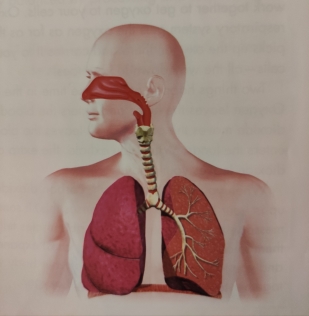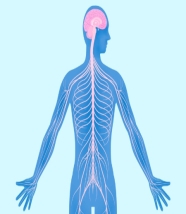Конспект уроку у 8 класі "Body Systems and Functions"
Topic: Body Systems and Function
The aim of the lesson: to develop students’ critical and creative thinking by learning about body systems and function.
The objectives:
To encourage students to:
-revise and introduce topical vocabulary;
- discuss body systems and function;
-develop creative writing skills in the form of investigation.
Outcomes:
By the end of the lesson students will be able to:
- identify body systems and function,
-observe how the diaphragm and rib muscles function during breathing,
- outline the parts of the respiratory system,
-measure the amount of air people can exhale.
Language Support Resources: video presentations, distributive material, visual aids, sheets with after -reading tasks, Big Science SB, student’s project
The Procedure
1. Organizing moment.
Good morning, children I am glad to see you. I hope you’ll be active, supportive and energetic at our today’s lesson.
2. Lead in.
T. Today we are going to talk about the important systems in our body. Read a definition of a system. (What scientists call a system is a collection of body parts that work together to do one thing that we need to stay alive.)
T. How does your skin protect your body?
Look at the picture of skin and discuss as a class how your skin protects your bodies. Accept all logical answers.

Now draw on your knowledge of germs and consider how your skin protects you from infection.
2. Vocabulary Practice.
T. Read the names of the three systems aloud. (circulatory system, respiratory system,
nervous system) Answer the questions to help you understand the meanings of the systems. What picks up oxygen in your lungs and circulates through your body? Your blood. So your blood must be part of what system? The circulatory system! When you touch something with your fi ngers, nerves in your fingers send a message to your brain. So which system has the brain and nerves as its parts? The nervous system!
Now complete the exercise individually and check answers as a class.
Look and label each body system.
|
|
|
|
T. With a partner, decide which body system is involved in each situation. Write CS(circulatory system), RS (respiratory system), or NS (nervous system).
Form pairs and complete the exercise. Check answers as a class explain your reasoning. (Possible answer: You use your respiratory system to infl ate a balloon. I think so because you blow air from your lungs into the balloon and your lungs are part of your respiratory system.)
1. You inflate a balloon. RS
2. You burn your fingers and it hurts. NS
3. You feel your heartbeat on your neck or wrist. CS
T. Discuss in groups what you think the role of each body system is.
T. Our skin is the largest organ in the human body. We usually think of something inside our body, like our heart, as an organ, but the skin is an organ, too. It does many things to keep us healthy besides protecting us from germs. Discuss what our skin does to keep them from getting too hot. What might happen if we got too hot? Accept all logical answers.
3. Reading Activity.
Pre-reading tasks
T. Look on the board and read the statement: I will learn about the parts of the respiratory system and how it works.
Answer the following questions:Where does your blood go to pick up oxygen? To the lungs! That’s right. In this lesson we are going to learn about the lungs and the body system they are a part of: the respiratory system.
T. Look and, with a partner, discuss how this man is using his respiratory system.

Who wants to be a volunteer who plays the trumpet or some other brass instrument to come up to the front of the class and discuss and mime how he/she plays an instrument.
T. Read and underline two ways that your chest makes room for the air you breathe.
The Respiratory System
Take a long, slow breath. Can you feel your respiratory system at work? The respiratory system is the system that helps you breathe. You take in air through your nose and mouth. Several muscles work together when you breathe. When you inhale, or breathe in, a dome-shaped muscle called the diaphragm moves down, making more space in your chest for air. Your rib muscles may also pull your rib cage up and out, making still more space. Air quickly rushes into your lungs and fills the space. The lungs are organs that help the body exchange oxygen and carbon dioxide with
the air outside the body. When you exhale, or breathe out, your diaphragm and rib muscles relax, move up, and push air out of the lungs.
After-reading tasks
T. Complete the statement for each diagram.

What is another way to say breathe in? Inhale. Breathe out? Exhale. What is thename of the dome-shaped muscle that moves up and down when you breathe? The diaphragm. Complete the exercise and check answers as a class.
4. Speaking Activity.
T. Your left lung is smaller than your right lung. Why do you think this is so?
Put a hand over your heart. Why do you think your left lung is smaller than your right lung? Guide students to the conclusion that the left lung is smaller because of the heart’s position.
T. Look and draw the path the air takes from your nose to your lungs.

We discussed how mucus helped to trap dust, germs, and other things in the air that they inhale. Mucus helps to clean the air that we breathe in. There are other tiny structures called cilia that line parts of our respiratory system that also clean the air that we breathe.. Why do you think it is important to have mucus and cilia to clean the air that we breathe in? (Possible answers: So dust doesn’t get into our lungs. It helps us not get sick.)
Complete the exercise. Check answers as a class by having students name the parts of the respiratory system in order from the nose to the lungs. (larynx-trachea-lung-bronchi)
5. Investigation
In this lab, we will investigate how the respiratory system functions. We'ill measure the amount of air we can exhale.
Advance Preparation: Make bubble solution by mixing 1 L of water, 60 mL of dishwashing detergent, and a few drops of glycerin. Let the solution set overnight.

How much air can you exhale?
1. Lay a trash bag over the top of a desk or table. Remove as many wrinkles as possible and tape down the edges.
2. Pour about 50 mL of bubble solution onto the bag.
3. Spread the solution around on the bag with a ruler. Dip a straw in the jar of bubble solution. Rest the straw on the wet bag. Take a deep breath and slowly breathe as much breath as you can into the straw. Observe a bubble forming.
4. Pop the bubble. Measure and record the diameter of the ring left on the bag. Use the Data Table to record the information for each student in your group.
6. Reflexion
Today we learnt about body systems and function.
What was the most interesting for you?
You worked so hard during the lesson.
Список використаних джерел:
1. Big Science 6 Pearson –Longman


про публікацію авторської розробки
Додати розробку



